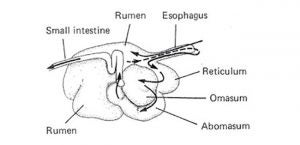Often, the public wants to know: Is there such thing as a climate-friendly cow?
In the summer of 2020, Burger King released a commercial that promoted the chain’s commitment to serving beef with a smaller carbon footprint. Though the execution of that campaign was widely criticized because of the insincere and demeaning way it portrayed farmers, the heart of Burger King’s message was that the fast-food chain was using lemongrass in feed in an effort to reduce methane emissions.
Where did Burger King come up with this idea?
Dr. Ermias Kebreab from the University of California-Davis took part in a global study to see the effects of different feed additives, lemongrass included, on lowering methane production in ruminants. Kebreab went public saying that the study was inconclusive, and Burger King had jumped the gun in how it presented the carbon data. In Mexico it was found that feeding lemongrass could reduce methane by a third, but the same was not true in the U.S. … which is where Burger King actually sources its beef.
Can’t say I love the video but we participated for the US part of the research. My brilliant grad student @HonanMallory worked hard on it. Our Mexican colleagues found 33% reduction but not in our study. Turns our Fresno sourced lemongrass was not quite the same as Mexican https://t.co/3rpLPakVd3
— Ermias Kebreab (@ErmiasKebreab) July 14, 2020
Although the ad was condescending — and has since been taken down or re-edited on many platforms — it did bring up a good point. If we can produce milk, meat, and wool with a smaller carbon footprint, shouldn’t we? Taking a deeper dive into Kebreab’s study (titled Feed additives as a strategic approach to reduce enteric methane production in cattle: modes of action, effectiveness and safety), and other similar studies, shows that not only is it possible, but it is totally reasonable.
Ruminants have a big rumen that allows chewed up food to sit and ferment before it is regurgitated and chewed up again. Carbon dioxide and hydrogen gas are the byproducts of fermentation that lead to methane production. Little bacteria called methanogens live in the rumen, and they convert carbon dioxide and hydrogen into methane through a process called methanogenesis.
Related: Debunking the myth that ruminants have four stomachs
Methanogenesis is no easy feat. An Australian group of scientists found that the energy needed to undergo methanogenesis takes up to 10 percent of an animal’s energy intake. So not only are ruminants producing an abundance of methane, but farmers are paying to produce it. Is methane production important for ruminants?
The methane itself is not important for ruminants. What is important to ruminants is to get rid of the byproducts of fermentation. Feed additives such as seaweed, fatty acids, and even oregano inhibit the methanogens from growing and producing methane. Inside the rumen, the feed is still being fermented, producing carbon dioxide, and hydrogen gas. These gasses have got to go!

If hydrogen gas accumulates in the rumen it will have negative effects on fiber degradation, and fiber is a huge portion of a ruminant’s diet. Feeding additives to reduce methanogenesis has to have balance. The ruminant cannot eat so much that all the methanogens in their gut die. By feeding these additives correctly, methane production can be decreased significantly.
Because methanogenesis is such a high energy task, the less methane a ruminant produces, the more energy efficient they are. Dry matter intake often went down while average daily gain or milk production went up in the studies on these feed additives.
There are a few kinks to work out, of course. Feed additives like seaweed and 3-nitroxypropanol, the most successful of the additives studied, can be quite costly and hard to come by. The study also showed that milk fat production in dairy cattle decreased by more than 2 percent in certain trials.
Reducing methane production in ruminants has many positive effects, and has the potential to make big changes in animal agriculture. Not only will farmers with ruminants be making progress on decreasing their carbon footprint, they will be producing more milk, meat, and wool for their feed inputs.
Elizabeth Maslyn is a Cornell University student pursuing a career in the dairy industry. Her passion for agriculture has driven her desire to learn more, and let the voices of our farmers be heard.



